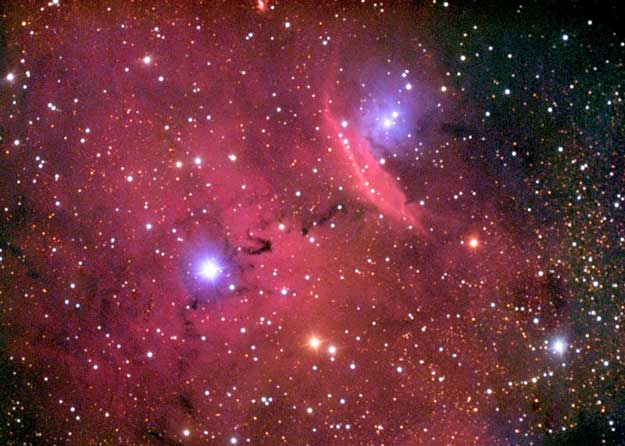Credit: Robert Gendler
Explanation:
Bright gas and dark dust permeate the space
between stars in a nebula known as
NGC 6559.
The gas, primarily
hydrogen, is responsible for the diffuse red glow of the
emission nebula.
As energetic light from neighboring stars ionizes
interstellar hydrogen,
protons and
electrons recombine to emit
light of very
specific colors, including the
red hue observed.
Small dust particles
reflect blue starlight efficiently and so creates the blue
reflection nebulosity
seen near two of the bright stars.
Dust also absorbs visible light, causing the
dark clouds and
filaments visible.
NGC 6559 lies about 5000 light-years away toward the constellation of
Sagittarius.
1999 2000 2001 2002 2003 2004 2005 2006 2007 2008 2009 2010 2011 2012 2013 2014 2015 2016 2017 2018 2019 2020 2021 2022 2023 2024 2025 |
Январь Февраль Март Апрель Май Июнь Июль Август Сентябрь Октябрь Ноябрь Декабрь |
NASA Web Site Statements, Warnings, and Disclaimers
NASA Official: Jay Norris. Specific rights apply.
A service of: LHEA at NASA / GSFC
& Michigan Tech. U.
|
Публикации с ключевыми словами:
отражательные туманности - reflection nebula - emission nebula - NGC 6559 - эмиссионная туманность
Публикации со словами: отражательные туманности - reflection nebula - emission nebula - NGC 6559 - эмиссионная туманность | |
См. также:
Все публикации на ту же тему >> | |
